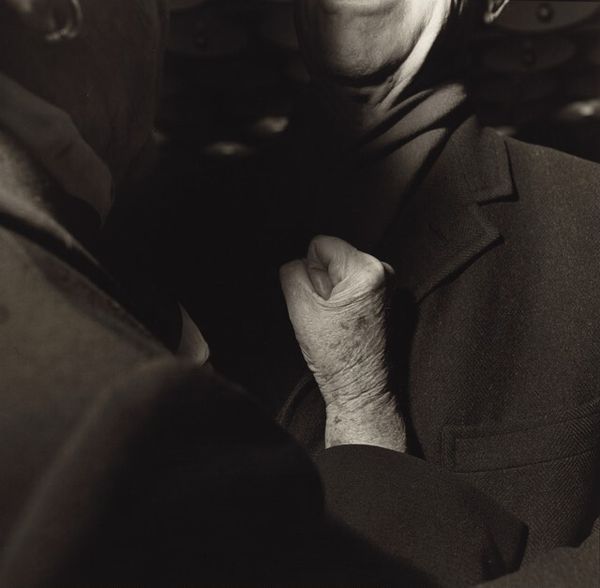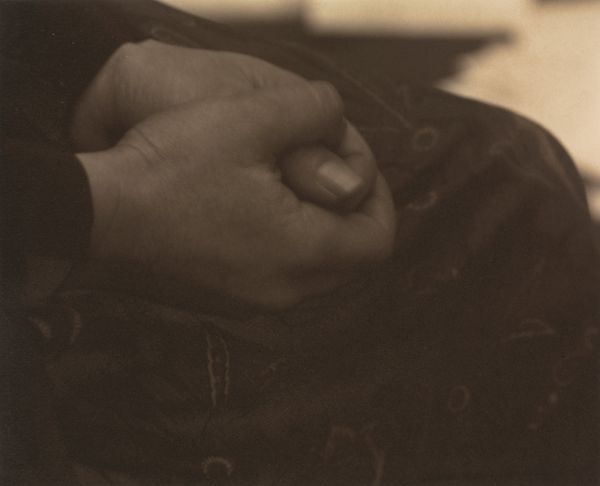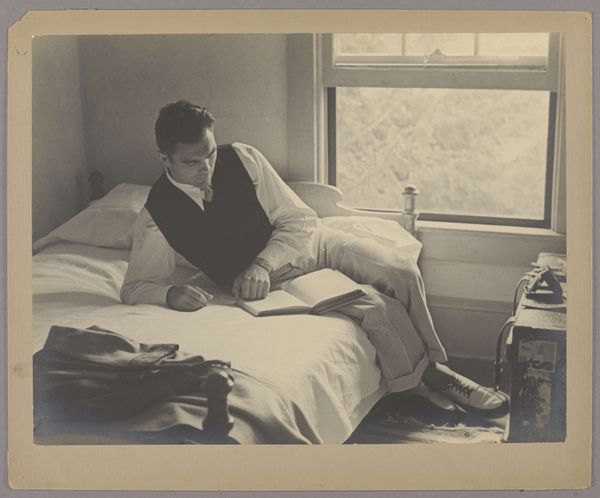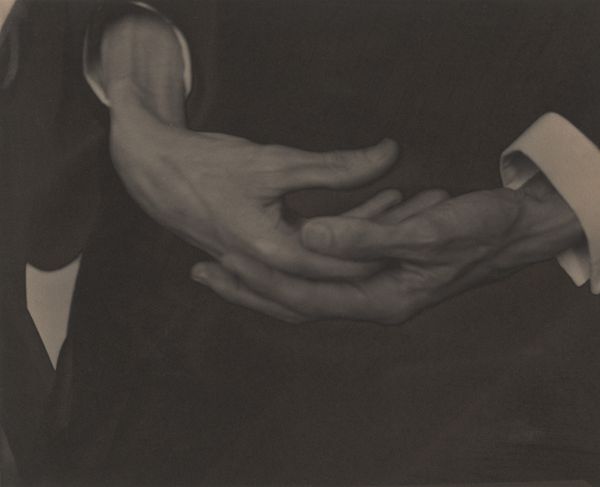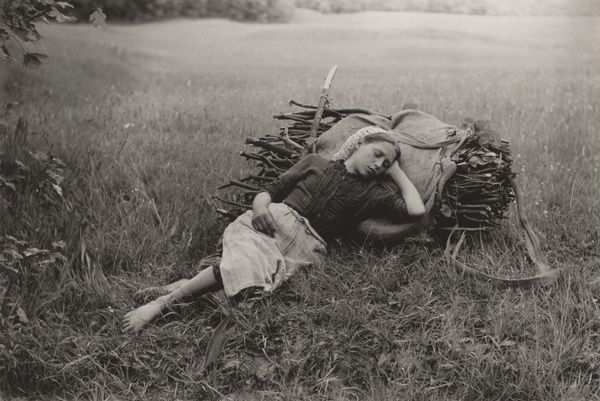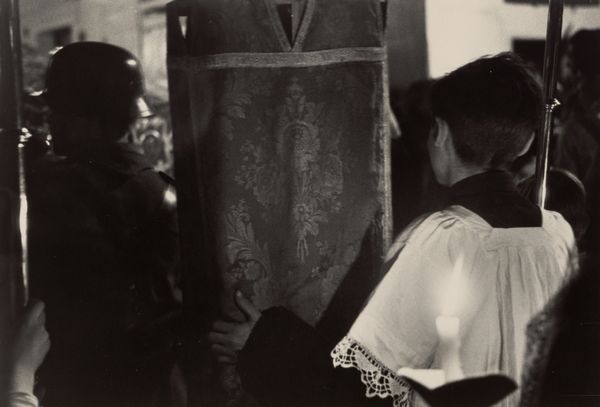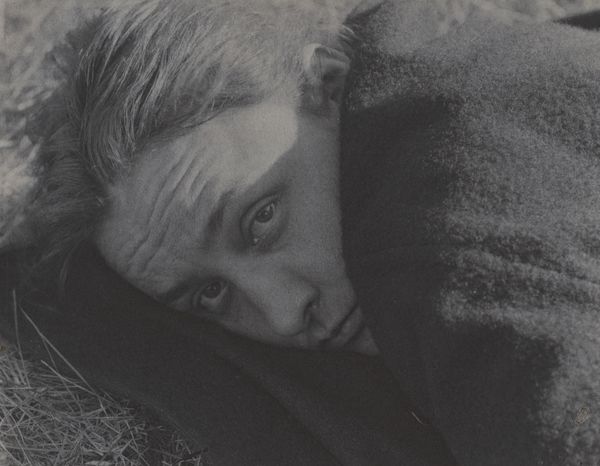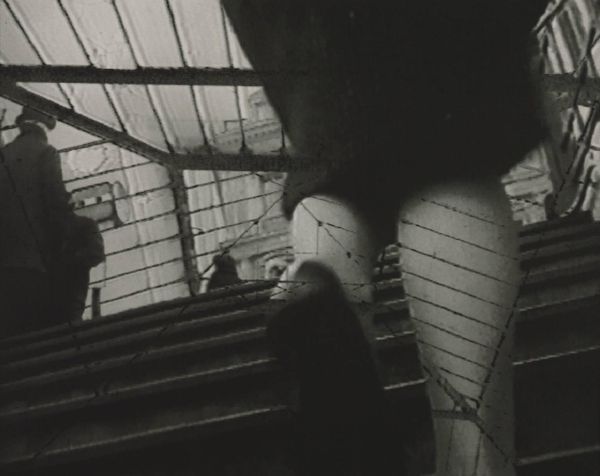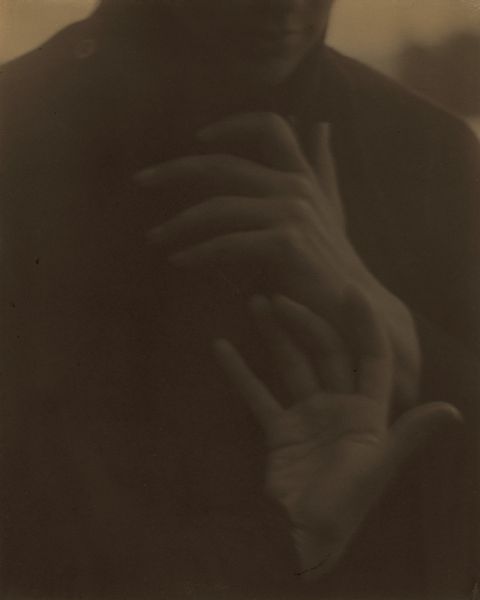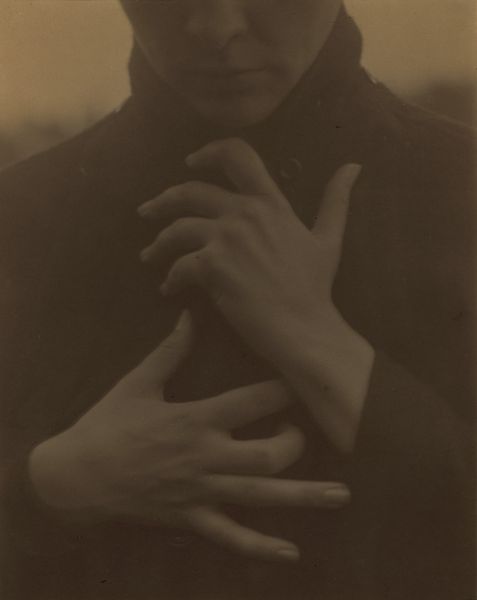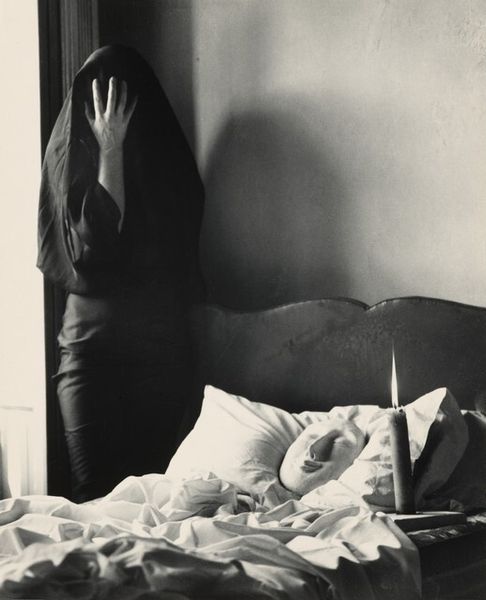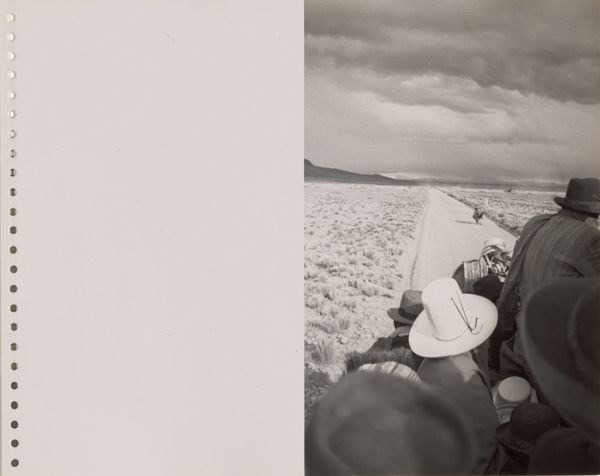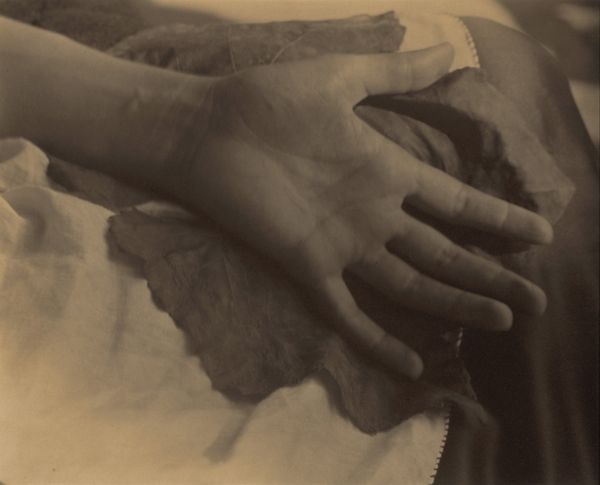
#
wedding photograph
#
black and white photography
#
photo restoration
#
outdoor photograph
#
outdoor photo
#
black and white format
#
archive photography
#
historical photography
#
monochrome photography
#
monochrome
Dimensions: sheet (trimmed to image): 11.3 x 9 cm (4 7/16 x 3 9/16 in.) mount: 32.2 x 25.2 cm (12 11/16 x 9 15/16 in.)
Copyright: National Gallery of Art: CC0 1.0
Curator: This photograph by Alfred Stieglitz, simply titled "Georgia O'Keeffe," could have been taken any time between 1918 and 1934. Editor: What strikes me immediately is the intimacy—the quiet intensity of O'Keeffe at work, completely absorbed in her own creative world. The light seems to wrap around her, pulling her in. Curator: Stieglitz had a way of doing that, didn’t he? The monochrome rendering really accentuates the textures—the chunky knit of her sweater, the rough ground she’s sitting on, the smooth paper. There’s a real focus on materiality, despite the softening effect of the light. Editor: Yes, you're right to highlight materiality here. Look at the watercolor set discarded on the ground, and the water jar next to the work in progress: It invites us to reflect on art-making, celebrating it as both cerebral creation and skillful manipulation of humble material objects. It isn't the romantic tortured artist but, instead, something much more like skillful and patient labour. Curator: I always read his portraits of O'Keeffe as dialogues—between artist and muse, photographer and subject. But beyond that, it's about the dance of perception itself. Is Stieglitz showing us *Georgia O'Keeffe,* or is he showing us what he *sees* in Georgia O'Keeffe? Perhaps he wanted the viewers to realize what the production of images and of representation is truly about. Editor: Precisely. It’s a compelling point—thinking of these images as collaborations in which O'Keeffe performs creative self-representation while simultaneously serving as raw material for Stieglitz's photographic experiments. There’s definitely an exchange of power at play. Curator: Absolutely. And in this particular shot, I get a real sense of her grounding – literally and figuratively. She's connected to the earth, rooted in her work. It's a very powerful statement, however quietly made. Editor: Indeed. It’s remarkable how such a simple composition, made with relatively modest means, can speak so powerfully about art, labor, representation, and human connection. There's real substance here, both visually and conceptually.
Comments
No comments
Be the first to comment and join the conversation on the ultimate creative platform.
